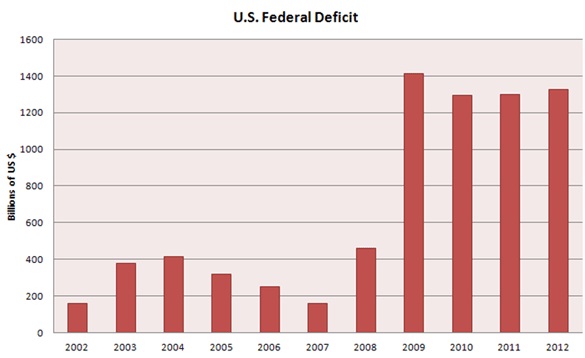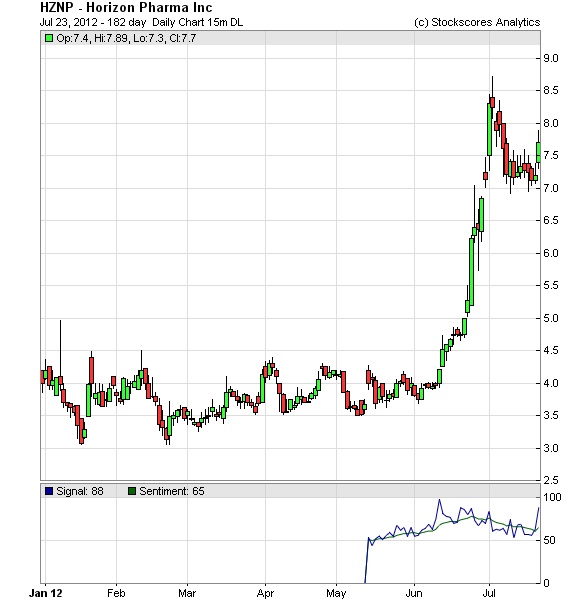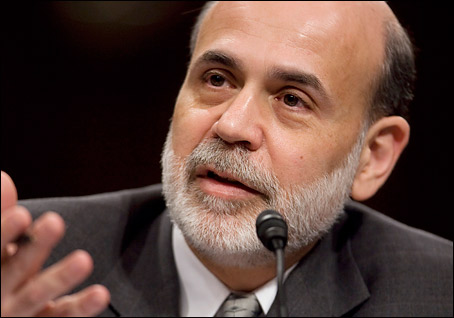Personal Finance
“With senior government bonds declining to exceptionally low, or even negative, yields, the action turned to corporates and has become measurably compulsive”
INSTITUTIONAL ADVISORS
WEDNESDAY, JULY 25, 2012
BOB HOYE
PUBLISHED BY INSTITUTIONAL ADVISORS
The following is part of Pivotal Events that was
published for our subscribers July 19, 2012.
SIGNS OF THE TIMES
“China’s benchmark price for power-station coal fell for the ninth week, the longest period of losses since 2008.”
– Bloomberg, June 10
“America’s Coming Civil War: Makers Vs. Takers”
– The Washington Times, July 12
We have been writing about America’s second civil war for some years, and note that it has been a “cold” war. The main difference is that the original Civil War was fought to extend freedom; the Cold Civil War has been prosecuted to constrain freedom through the urgencies of political correctness. Political correctness has been a remarkably versatile instrument.
“Makers Vs. Takers” is a very good slogan.
“The figures that go into China’s gross domestic product are ‘man-made’ and ‘for reference only’.”
– Bloomberg, July 13
The criticism was made by Li Kegiang who was a regional Communist Party head in 2007. It was revealed by WikiLeaks in 2010.
It seems that most countries have a Ministry of Truth.
* * * * *
PERSPECTIVE
On Friday the Dollar Index stalled out at the overhead resistance level of 83.5, and has slipped to 82.8. This has refreshed stocks, corporate bonds and commodities. Or, perhaps it’s the other way around as strength in the orthodox trio has forced the dollar down.
Friday’s ChartWorks noted that the DX was poised for a pause in its long-term uptrend.
Positive vibes could run for a few weeks.
BONDS, BONDS, BONDS
Intended consequences often become unintended consequences – particularly when it comes to intrusive policymaking. One might ask if there is any other kind. Fiduciary responsibility hasn’t been seen or heard of since the late 1900s, which recorded the height of Nineteenth Century Liberalism. One consequence is a highly speculative bond market.
The purpose of the initial stimulus with the Bear Stearns problem that began in June 2007 was to fix one problem and restore the “prosperity” of the boom. Mind, there was a faction that was working to keep the “sup-prime” problem “contained”. Neither worked out because the feature of every great financial mania has been that most banks get reckless and overexposed at the same time. So “fixing” one bank was improbable, as was the notion about “containing” the sub-prime-housing disaster.
But, the combination of naivety and ambition propelled policymakers to ridiculous attempts to make bad things go away by hoping a new wave of speculators would start to bid up house prices. But the stimulus had to go through the banks, which means Wall Street, and savvy traders (the ones left) positioned for a technical rebound. This turned into the first business recovery out of a crash. It was likely to be weak.
But the action became outstanding enough to set up the next wave of losers.
Essentially, this began with commodities when our Momentum Peak Forecaster called for a speculative surge to complete around March 2011. The high for the CRB, which was likely to be a cyclical high, was 370 at the end of that April. Technically, the CRB and within this, base metals are in a bear market. Grains have been outstanding lately due to the worst heat and drought in decades.
The next big play to culminate was the compelling action in US Treasuries. This registered huge Upside Exhaustions in May, as Ross described the chart as an “Eiffel Tower”. The peak of intense speculation is being tested and, technically, a significant price-decline is possible.
With senior government bonds declining to exceptionally low, or even negative, yields, the action turned to corporates and has become measurably compulsive. The following chart (below titled “Raptured Corporate Bonds” shows a set of daily Upside Exhaustions that usually anticipate an approaching top within a couple of weeks. Also noteworthy is that the index is reaching for the upper channel trend line at 122.
Technically, an impressive price drop is possible.
What would be the fundamentals of such a decline in price and rise in yields?
In as few words as possible the reasoning is Post-Bubble Contraction. During any financial mania the world compulsively takes on more debt than the global economy can service. That’s even if the economy remained “normal”, but the pattern has been that the worst recession since the last bubble occurs. This has been followed by an unusually weak business cycle.
The only way out of the condition is a lengthy process of liquidation of all debt. “All”?
Yes, because the process can be called a great bond revulsion whereby all classes of bonds are shunned or avoided. Outstanding speculation in long-dated treasuries in May and in investment-grade corporates now suggests the best is virtually in. A turn for the worse could live up to the full meaning of the word.
Much is being written about negative yields. This is an exceptional condition, but negative real rates adjusted for inflation are part of any great bubble. We will review this more thoroughly, but for this week’s piece we will note that real long interest rates in the senior currency have increased by some 12 percentage points during the great bond revulsions.
Link to July 20, 2012 ‘Bob and Phil Show’on TalkDigitalNetwork.com:
http://talkdigitalnetwork.com/2012/07/corn-pops-markets-slump/
RAPTURED CORPORATE BONDS

- Typically, the Upside Exhaustions anticipate the actual top by up to a couple of weeks.
- The action is approaching the top channel line at around 122.
- Note the technical “buys”.
BOB HOYE, INSTITUTIONAL ADVISORS
E-MAIL bhoye.institutionaladvisors@telus.net“>bhoye.institutionaladvisors@telus.net
WEBSITE: www.institutionaladvisors.com

“At difficult times requiring sophisticated analysis, it is Greg’s time to shine. He has been top of these events for so long other analyst’s turn to Weldons work because it has been so good, is so good.” – Michael Campbell.

Is the Federal Reserve going to save us all with QE3? Weldon say’s “absolutely they will do QE3. The questions are only the timing, how to execute and how much will be needed to be effective”. There is a great deal of uncertainty right now as these markets and the environment have never been more difficult. “The fed will keep dangling the QE3 carrot in front of the markets long enough to keep them in check, so that they don’t hit another slide into a deflationary mode, which they are really on the verge of doing”. So QE3 is coming and the markets sense that. The real question is when. Greg spells out below some of the challenges the Fed faces in timing its QE3 stimulus below.
“Never has there been been a more critical fiscal or political situation. No one can really debate the fact that the fiscal future of the US hangs in the balance. That is a daunting process that really, in my mind, keeps the Fed on hold for the moment. Regardless the hope will run out at some point and the fed will move. You’ll get a rally, it will be disappointing,”
That and the Fed won’t have a lot of bullets left should QE3 fail. That and there is an election coming.
With previous stimulus packages “We knew you would get some commodity inflation, some inflation in the markets, but you would not get the type of inflation that would show up in the regular economy, like wage inflation for exampe. You just wouldn’t have it. The trillions of dollars printed and pumped in sent the equity markets and commodity markets higher. It also re-liquified the banks and kept the system from collapsing into itself, yet it had very little efect on the real economy. The US economy is sick and getting sicker with US existing home sales recently seeing its biggest monthy decline, and US Food and Energy prices, particularly gasoline, are now down 3 months in a row. Further the US. posted the biggest retail sales decline in its history and the US labour market is clearly in a long term crisis of unemployment. Case closed”.
The markets are living on hope here, but that can only last so long. The real question is, can Bernanke can pull off something monetarily before the election?


Weldon Financial produces independent research for the sophisticated investor and/or trader and offers investment management solutions that capitalize on global market trends. Greg Weldon is the founder and sole producer of all the research and operates his money management services as a registered Commodity Trading Advisor.
Weldon’s Money Monitor offers a very independent, objective view of the global markets by applying a top down market analysis and a bottom up technical analysis. Greg also publishes The Metal Monitor and The ETF Playbook offering specific focus on the precious metals markets (prices of Gold, Silver, etc.) and the world of Exchange Traded Funds, respectively. He has a creative and captivating writing style and his loyal readers have claimed that the ‘research pays for itself over time’.
The Global Macro-Discretionary Program manages money for individuals, joint, trust, corporate and partnership accounts. Mr. Weldon approaches his investment selections from a top-down macro-perspective and then applies his quantitative discipline from the bottom-up to execute his methodology, seeking to produce an absolute return while sharply focusing on risk management. This program invests in a diverse range of futures contracts across the commodity, currency, global stock index, and global fixed-income sectors. Weldon’s Commodity Long-Short Program takes a more quantitative approach, using our proprietary Momentum Trading Indicators, and invests strictly in the strongest ‘bullish’ and ‘bearish’ commodities. And, our Metals-Only Program is also quantitatively driven and seeks to profit in bullish and bearish markets using a select basket of precious metals.


![]()
Does diversification make you safe from market swings? Watch this week’s Stockscores Market Minutes video for the answer.Click here to watch the video on Youtube.
How do you assess a stock that you are considering for purchase? There can be an infinite number of answers to that question, some methods are effective and others will lead you to random results. Here are some things to consider when doing your analysis before you purchase a stock for your portfolio.
1. Understand who is in control of the stock
The best stock purchases come when control is shifting from sellers to buyers, when a downward trend is ending and an upward trend is beginning. That is also the most difficult moment to predict. It is easier to find stocks that the buyers have control of but are not yet well in to their upward trend. To do this, look for stocks that have rising bottoms on their stock chart but are not yet well in to an upward trend. A simple guideline is that stock’s that have a Sentiment Stockscore of 60 or higher are in the control of the buyers, but we want to get these stock early in the upward trend, not well in to it.
2. Know the trend of the company’s sector
A stock’s price performance will have some correlation to the market in general and a stronger correlation to other stocks in a similar industry. If you are considering an oil stock, check out the chart and the Stockscores indicators for an oil stock index. These are available on Stockscores in the Sector Watch tool, or by knowing the symbol of the industry index or ETF.
3. Find out if there will be a supply of new stock in the future
This is a rule more for smaller capitalized stocks, but it is a good idea to find out if stock issued from a recent financing will become free trading in the near term. If a company issues new shares to raise money, the new shares will come to the market and the investors that bought that financing may sell those shares when they are allowed to. Many newly issued shares have a hold period, so it is worth doing the research to find out when past issued shares come free trading. You can do this for US stocks by going to www.edgar.com and for Canadian stocks by going to www.sedar.com, or by going to the company’s website and checking out their news releases and regulatory filings.
4. Identify price zones where sellers will act
Investors have a memory and so too does the market. The market will remember past price tops and areas of sideways price trading. If a stock is moving up in to these price zones, there is a good chance that the upward momentum will stall there. Take the time to look at a stock’s chart going back at least two years to see areas where sellers may find inspiration to unload more stock and cause a top to an upward trend.
5. Look for signs of new information
A stock’s price will not move on what has happened in the past, it will move on what happens in the future. This means that fundamental information that is announced in the future will have a great affect on the movement of stock price. Within every company, there are a small group of investors that tend to get better information than others and these people may act in the market ahead of important fundamental events, creating abnormal market activity. Looking at a stock chart for signs of abnormal activity, including abnormal volume levels, abnormal price movement or breaks out of trading ranges can be a good way to identify stocks that may have big news coming.
6. Find out the dates of potentially significant news announcements
Big price moves in stocks are event driven, so it pays to do some research to find out if there is big news coming in the future. Is a company in a legal dispute that could soon be resolved? Are they testing a new product that may soon come to market? Are they seeking new resources that could improve their ability to make money in the future? Look for any event that could soon be announced and have a major effect on the stock’s price and assess the risks of a downward move versus the potential rewards of an upward move.
7. Read the message of the market
Stock charts tell us a story about what investors feel (emotional) about a company and what they know (rational) about a company. Learn to read the chart patterns to understand if the company is doing good things and if the market likes what they are doing. The best opportunities come when the market is just beginning to learn of something that will have lasting and positive effects on the company’s ability to make money. By getting in early on these hot story stocks, investors can enjoy lasting money making trends.
8. Think about what the crowd may be thinking
The crowd tends to be late trend investors so it is best to be one step ahead of the crowd. The crowd will take their investment cues from the mass media which makes the mass media a good contrary indicator. If an investment idea is front page news or the lead story on a widely watched TV program, it is likely that you are nearing a top in the stock. Be wary of following the crowd.
9. See if there are signs of emotion in the market
Emotional decision making causes investors to misprice stocks, either to the upside or the downside. In times of panic selling, there are bargains. In times of euphoria, there are overpriced stocks. To identify emotion, look for parabolic (curving) trends and high volume. In these cases, it is better to go against the crowd as the stock is likely to move back to the linear trend line.
10. Determine whether investors are confident or uncertain
Price volatility is an indication of investor confidence in the price they have given to the stock. Think of the stock market as a mechanism where investors can cast their vote on what the true value of the company is. Buyers buy because they think the stock is worth more and sellers sell because they think the stock is worth less. When buyers and sellers come to some agreement on price, you will find low volatility, sideways trading. When there is uncertainty, prices will change dramatically in a short period of time, often making the risk of the stock greater than the potential reward simply because the market does not have a good understanding of what the company is worth.
![]()
This week, I used the Stockscores Market Scan to look for stocks that have a Sentiment Stockscore of greater than 59 but less than 76 and which traded at least 2500 times on Monday. That turned up a lot of stocks, I checked the charts to see which have them are not already well in to an upward trend. I searched for stocks that have chart patterns that are building toward an upward trend. Here are a few examples:
![]()
1. GALE
GALE has been building optimism for about a month, I like it on weakness as it pulls back to the upward trend line which it is doing now. Support at $1.55.

2. CLDX
CLDX is building an optimistic pattern under resistance at $5.60, watch for a break through that price level as a cue that the stock wants to go higher. Support at $5.20.

3. HZNP
HZNP has been going up for a while but went in to a pull back flag pattern over the past few weeks. Today, it breaks from that flag and looks like it can continue higher. Support at $7.

References
- Get the Stockscore on any of over 20,000 North American stocks.
- Background on the theories used by Stockscores.
- Strategies that can help you find new opportunities.
- Scan the market using extensive filter criteria.
- Build a portfolio of stocks and view a slide show of their charts.
See which sectors are leading the market, and their components.
Disclaimer
This is not an investment advisory, and should not be used to make investment decisions. Information in Stockscores Perspectives is often opinionated and should be considered for information purposes only. No stock exchange anywhere has approved or disapproved of the information contained herein. There is no express or implied solicitation to buy or sell securities. The writers and editors of Perspectives may have positions in the stocks discussed above and may trade in the stocks mentioned. Don’t consider buying or selling any stock without conducting your own due diligence.

All over Europe right now Banks are going Bankrupt, Governments are flat broke or worse, and currencies are all over the place. Now the US Federal Reserve thinks some US Money Market Funds are so wobbly they are considering limiting the amount of money an investor can withdraw from them.
European institutions are so stricken that currently investors are actually paying a financially secure Germany to take their money. These financial storms in Europe and the US are creating waves that could smash against Canadian shores at any moment, so now might be a good time for an investor to examine their exposure to Money Market Funds. A startling line from a Fed Official in the artice below: “The delay would ensure that redeeming investors remain partially invested in the fund long enough to share in any imminent portfolio losses or costs arising from their redemptions,”
Fed Eyes Limiting Money-Market Fund Withdrawals
NEW YORK–The Federal Reserve Bank of New York said it supports limiting some types of money-market fund withdrawals in a bid to protect those funds from suffering the equivalent of a bank run.
The recommendations came from a staff report released Thursday. New York Fed President William Dudley in a press release accompanying the document said he “strongly” endorses the ideas put forth by authors Patrick McCabe, Marco Cipriani, Michael Holscher and Antoine Martin.
“Further reform of money funds is essential for our nation’s financial stability,” Mr. Dudley said.
The analysts propose that money-market funds could be strengthened if they were to have a “minimum balance at risk.” As envisaged by the authors, this balance “would be a small fraction of each shareholder’s recent balances that would be set aside in the event that they withdrew from the fund,” the press release said.
While regular transactions would be allowed as they are now, this special minimum balance would be locked up for 30 days. “The delay would ensure that redeeming investors remain partially invested in the fund long enough to share in any imminent portfolio losses or costs arising from their redemptions,” the bank explained.
The idea advanced in the New York Fed paper seeks to force investors to be more mindful of what they are doing with money-market fund investments. Many perceive the funds to be a very safe and liquid place to park funds. But that notion was tested during the 2008 financial crisis, and some have worried that in the current environment, money-market funds could be a prime conduit for importing Europe’s ongoing financial crisis to the U.S.
Money-market funds currently hold some $2.7 trillion in assets, according to the paper. They own, as of late 2011, around 40% of all dollar-denominated commercial paper, the New York Fed said.
The report provides fodder for Securities and Exchange Commission Chairman Mary Schapiro as she inches her divided agency toward a vote as early as this summer on a proposal to strengthen money-fund regulations. SEC officials described the New York Fed paper as a “blueprint” for the changes Ms. Schapiro would like to make.
Ms. Schapiro, joined by Federal Reserve and Treasury Department officials, sees money funds as one of the weakest links in the financial system despite reforms adopted two years ago to make the industry more resilient to widespread redemptions. Fund firms and other experts say the cash-like investments rarely run into serious trouble.
To publicly float her proposals, Ms. Schapiro needs “yes” votes from two of her four fellow commissioners. For months, three of the commissioners have said they don’t believe there is sufficient evidence additional money-fund overhauls are needed, effectively blocking the proposals’ advancement.
A number of Fed officials have been anxious about money-market funds for some time. Central bankers see the funds as a prime source of risk in large part because their structure is such that when trouble, or the fear of trouble, arises, investors have every incentive to withdraw all their funds. That can create the equivalent of a bank run.
In congressional testimony Wednesday, Fed Chairman Ben Bernanke said money-market funds are currently a potential source of financial-market instability. He expressed his support of regulators’ attempts to lower the source of risk posed by money funds.
Bottom Line, Canadians Banks are well capitalized, tightly regulated and some of the safest in the world. That said, there is no rule that say’s they can’t reinvest your cash in Banks/Corporations/Government short term paper so they can pay you a small investment return. Suddenly Money Market Funds are riskier when you consider what just happened in, Spain (small savers in Banks are losing billions of Euros), or MF Global which filed for Bankruptcy after investing in European sovereign debt. to counter this risk, this Federal Reserve will simply prevent you from taking all of your cash from a Money Market Fund in one transaction. Oops. A Global “Bank Run” would make it extremely difficult for Money Market Funds to liquidate the short term securities it invests in so that they can pay you back promptly.
In short, no longer assume that you can always get your cash from a Money Market Fund when you want it. Moreover there is the possibility that the “cash” you have in a Money Market Fund could vaporize as it has for so many Spaniards and investors in the Broker/Dealer MF Global.
Things are getting very tough worldwide. Be sure to take the time to check on any cash you have in Money Market Funds.


Bernanke spoke before congress in the face of a Global Slowdown that includes a European Economic Smashup, a slumping USA and a China contracting as its former powerhouse customers have no money left to buy its production. Can Bernanke save us all?
Well if you listen to wise men like Jim Rogers he is sure going to try: “Mr. Bernanke is going to print more money…I wouldn’t pay much attention to the man…He only knows one thing – and that’s what he’s going to do…”
So what have we learned from Bernanke’s testimony:
1. Bernanke bluntly said in response to questions about the state of the economy that the US was “just “muddling through” while Europe was “already in recession.”
2. His prepared testimony went further, noting that GDP grew at a slower rate in the first quarter than in the second half of 2011 … and that the second quarter looks even worse. He also pointed out that payroll growth has plunged by 63 percent … that household confidence in future income remains low … and that business spending is waning.
3. Bernanke said the Fed could consider another round of quantitative easing, or QE3. Consider the effect that is likely to have given the previous attempts at easing (from Mike Larsen):
QE1 came at a time when the lending rates were very high and the credit markets were in complete disarray. It was a brand new policy nobody expected, and it had a huge impact in terms of bringing down spreads, rates, and risk levels.
But QE2 was less effective in terms of impact because market dysfunction was already largely fixed and because the underlying economy was weakening. Moreover, other similar programs from the European Central Bank’s LTRO1 and LTRO2 to Operation Twist 1 and 2, have had even less of an impact than QE2!
Just consider: A Credit Suisse note from a few days ago chronicled the findings of several studies on the impact of QE on 10-year Treasury Note yields. Several researchers estimated QE1 lowered yields by around 90 basis points to 100 basis points. But they also concluded that QE2 moved rates by as little as 13 basis points!
That was the supposed impact on the financial markets. The impact of several hundred billion dollars worth of QE on the real economy — meaning GDP — was as paltry as 40 basis points. That’s the difference between 0 percent growth and 0.4 percent growth, a drop in the bucket!
Yet somehow we’re supposed to believe that QE3 — the THIRD iteration of a policy that’s having less and less impact on financial markets, not to mention a near-zero impact on the real economy — will somehow be different?
Seems best to bet that we are being lead by an Ineptocracy which is “A system of government where the least capable to lead are elected by the least capable of producing, and where the members of society least likely to sustain themselves or succeed, are rewarded with goods and services paid for by the confiscated wealth of a diminishing number of producers”.
In other words, bet against the leaders of the US Government & Fed. How to do that? I think Jim Rogers say’s it best. He is clearly betting against the Ineptocracy when he states: “He remains totally committed to commodities over the long term as the global economy continues to be drowned in mountains of the bankers’ paper currencies, these hard assets must soar in price – as all that paper collapses in value.













